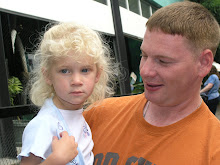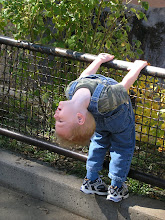Many people, especially those from coastal areas with large cities and abundant rainfall see the Super Bowl as a hostile and frightening landscape, something to pass through as quickly as possible in order to get to more desirable destinations elsewhere. I remember years ago, a visitor from the "Midwest" stopping at our home after driving all day from Salem, Oregon, and making the comment, " I didn't realize there was so much wasteland in eastern Oregon." She had just driven through an area that would probably be considered the northern boundary of the Great Basin. Calling someone else's homeland a "wasteland" is as much a type of discrimination as making people of a different color sit on the the back of the bus, but it's also proof that she didn't actually see the country she had just driven through. The Super Bowl is beautiful. Although vegetation may be sparse, there's a wide variety of unique and fascinating species. Unusual kinds of mammals, reptiles, insects, and birds live in the Super Bowl. The shape of mountains and rocks are iconic images to the perceptive viewer. It's at places like the Super Bowl, where there is little or no vegetation, that one can actually see the fingerprints of the creator on the earth.
On the surface of the moon are many super bowls. The moon landscape is covered with craters caused by the impact of comets, asteroids, and meteorites hitting the terrain. There is no atmosphere around the moon to protect it, so unlike the earth where most objects from space burn up in the atmosphere before hitting the land, the surface of the moon is littered with craters or "super bowls." They range in size up to hundreds of kilometers in circumference. During the course of human history men have walked on the surface of the moon and got a close-up look at a few of the super bowls there. If I recall correctly one or more of them may have even landed their spacecraft in one of the largest super bowls there.
On Sunday afternoon, Feb. 1, 2009 in Tampa, Florida another kind of newer, less well known super bowl took place. It occurred in a relatively minuscule "bowl" capable of holding only several thousand people and covering no more than a few acres. Like many things on contemporary Earth it received attention far out of proportion to its importance, or to the contribution it makes to humanity. True, a famous and accomplished poet performed half-way through the event, but the sound level was so raucous that if you didn't already know the words to his poems you probably wouldn't have heard them distinctly enough to get the message. A game was played on the flat field between the seats. It was mistakenly called "football," but was not at all like the real football game played in most countries. In this game hands were used more than feet, but neither would "handball" be an accurate name for the game. Strangely enough many people paid a lot of money to come and watch the game. Millions more were watching on TV. There was a lot of noise. People watching the performance and the game were excited. But it was the second-handed, vicarious excitement so common today, excitement that comes from observing the efforts and activities of others, rather than engaging in a rewarding endeavor ourselves, and tasting the success and sense of accomplishment first hand.
During the course of this "game" in this so-called "super" bowl, two teams made up of heavily uniformed players, eleven on each side, engaged in competition. One team attempted to get a weird-shaped "ball" from one end of the field to the other, either by carrying or throwing it, and the other team did their best to try to try to stop them, and take the ball away. This contest is billed as an athletic event and the participants are considered to be young, strong, and very skilled. Some of them are quite large. At first glance the viewer might believe that these players are great athletes, since there are sudden bursts of speed as one runs (usually with the ball) and the others either pursue him, or try to clear his path. There is considerable contact among the players, physical contact of the kind that if it occurred in a different setting and without all the protective specialized clothing and gear, suspicions would be raised, and you probably wouldn't let your children watch. But I noticed that often after these very brief bursts of intense activity, one or more players would head for the sidelines, sit down and rest while someone else took their place. I also noticed that the average burst of action or "play" took from about 5 to 10 seconds, often less, while the average time between "plays" took 20 seconds or more, and that didn't necessarily include "time outs," "official reviews," "penalties," "commercials," and other interruptions. So you can figure that for at least 85% of this game which lasted a few hours, the athletes were simply walking on the field, or circling in a "huddle," while only about 15%, or less of the game time actually had any real activity. This, of course raises questions about whether these participants are really athletes since most of the game time is spent resting or waiting. Of course it also raises questions about why so many people watch, either in person or on TV. What's so interesting about watching over grown men walking around in circles, or picking themselves up from the ground?
I live on the northern boundary of the Great Basin, the largest Super Bowl in the country, and there's nothing I enjoy more than a long road trip across this Super Bowl, or a short hike on it's terrain. Like many other humans I've surveyed the craters or Super Bowls on the moon through binoculars and marveled at their beauty and grandeur. I have to admit that I watched part of the super bowl in Tampa on Feb. 1, but even with the suspenseful ending, it was definitely the least interesting of the three.
Leonard Nolt




1 comment:
I've been up your way to the area around Pullman. I've driven east into Idaho many times. Whatever the perils of the world, you have that beauty. Sounds trite I suppose, but some days that's all that keeps me going.
Post a Comment